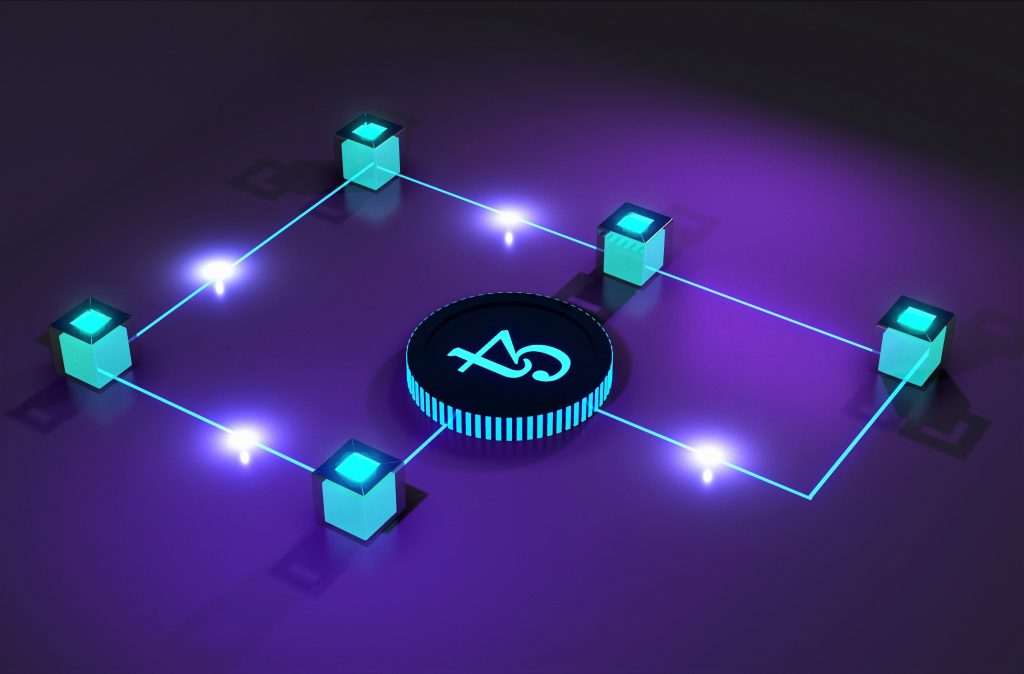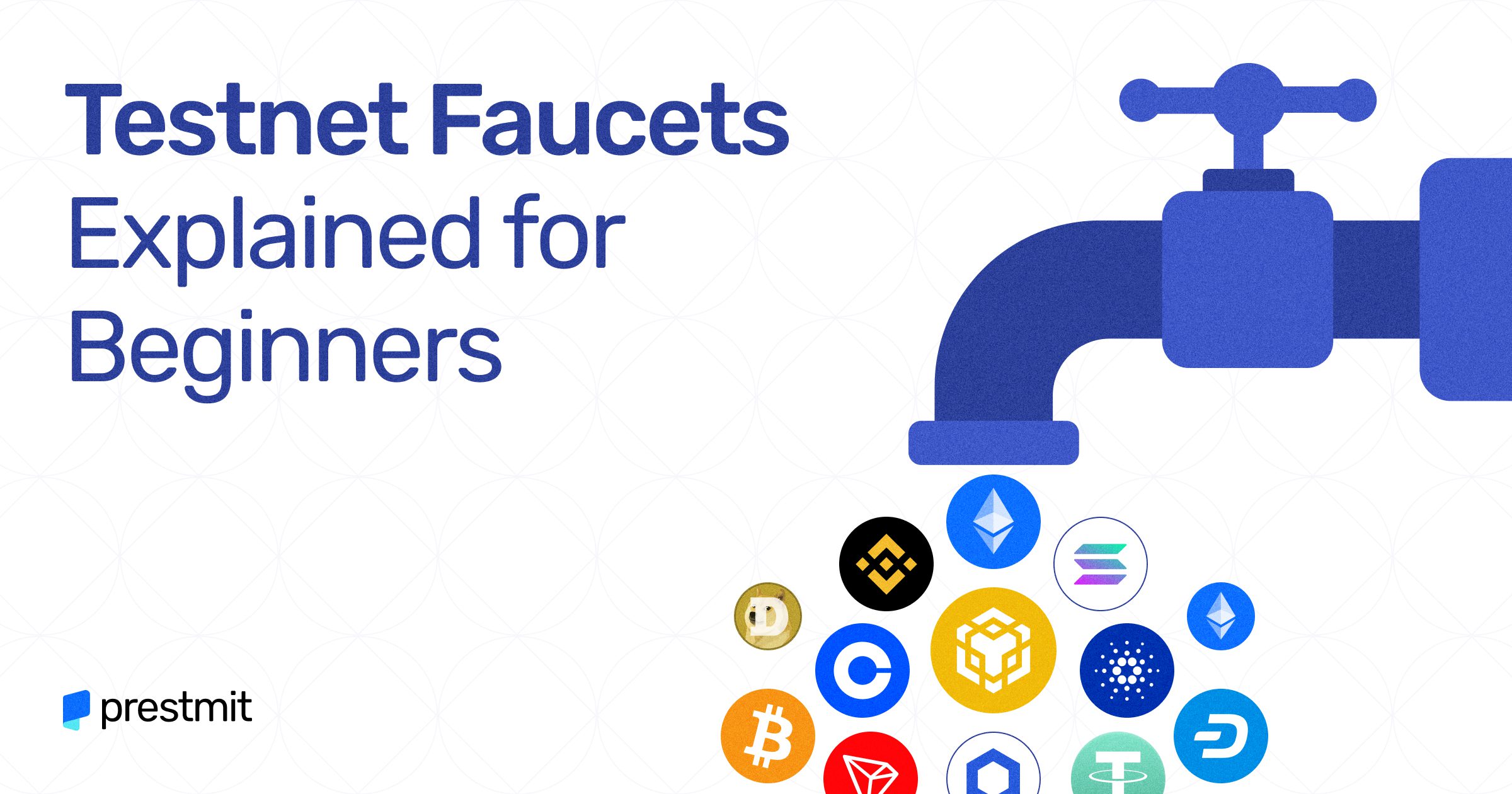Testnet faucets are the sources of testnet coins used for testing purposes. They’re set up by the organisation running the testnet to distribute testnet coins to users.
Cryptocurrency and blockchain tech have become more popular but are still complex. To help you understand how many users learn to carry out blockchain operations, we’ll explore testnets and testnet faucets.
This article will break down the concept of testnets and testnet faucets into comprehensible pieces. So, if you’re a beginner in crypto or just interested in this subject, keep reading.
What are Testnets?
Testnet, short for Test Network, is an alternate blockchain or crypto ecosystem built only for testing out a blockchain and the response of smart contracts therein.
Think of testnets as a mock ecosystem where every function on the mainnet is tested and tried without real consequence. Call it a blockchain simulation, if you will.
Testnets are important tools in developing and deploying decentralised projects and cryptocurrencies. In crypto, you learn by “doing”, and using actual coins or testing out smart contracts on a mainnet is unwise. If anything goes wrong, the developers can fix the problem before the function is pushed to the live blockchain or mainnet.
What is a Mainnet?
A mainnet is simply the live version of a blockchain and is short for Main Network. If testnets are the simulation or practice field, consider the mainnet the real playing field where decisions and actions have real consequences.

What are the Benefits of Using Testnets?
You probably can mention a few benefits of testnets from our explanation. But here’s a more comprehensive look at the benefits.
- Spotting Errors in Development
With testnets, developers and test users can spot loopholes and errors that may be risky if pushed to the mainnet. Developers use testnets to refine their code and work out any problems that may be present on the livenet. Testnets give developers the space for quality assurance in building blockchain applications.
- Testing Out Smart Contracts
Smart contracts are the lifeblood of decentralised projects. If there are faults with the code, they are apparent in the functionality on the mainnet. So, testnets are used to test the functionality and security of old and new smart contracts and deploy them.
- Upgrading the Network
With testnets, developers are sure they can effectively and safely upgrade a blockchain network without causing harm to existing protocols.
- Fostering Community Between Developers and Users
Testnets provide an opportunity for developers and users to interact. This interaction offers valuable insight into the network, such as bugs, necessary improvements to be made and general feedback.
It creates a playing ground for crypto enthusiasts on either side to work together to improve the network.
- Providing Learning Opportunities for Aspiring Developers
For aspiring developers or even curious blockchain enthusiasts, testnets create an excellent learning opportunity. Engaging with the testnets gives budding developers and enthusiasts better insight into how blockchain technology is built and how it works.
Types of Testnets
Testnets are of two types, namely – Public and private testnets.
Public testnets are test networks that are open to the general public. Anyone can participate in the experiment and test the network with the valueless testnet coins. They’re also called Graphical User Interface (GUI).
Private testnets, however, are test networks that are closed to the general public. Only those invited can access the network.
This type of testnet is suitable for developers, collaborators, and project auditors. It makes for a more controlled testing and developing environment. They’re also called Command Line Interface (CLI)
Now that you understand the basics of a testnet let’s get into the main focus of this article- Testnet Faucets.

What are Testnet Faucets?
Testnet faucets are sources of free testnet coins. A testnet faucet is a service that gives testnet tokens to developers and test users to test the functionalities of their applications or the network without risking using real crypto.
Testnet Faucets are essential to the blockchain ecosystem. Without the tokens they give out to developers and test users, a huge aspect of blockchain testing would be impeded.
It’s not that the developers cannot obtain testnet tokens from other sources. But testnet faucets provide these test tokens for free or in exchange for some information. So, you can say that testnet faucets are important mostly because they mitigate the cost of obtaining testnet tokens.
How do Testnet Faucets Work?
We’ve already established that testnet faucets are a source of free testnet tokens. We also know that these test tokens are very pertinent in the development of blockchain networks. So, it’s noteworthy that testnet faucets are usually third parties or blockchain developers.
To test applications and other functions on a blockchain, developers need test coins. Testnet faucets are the best sources for these coins. These sources save test users and developers the time and effort they’d otherwise expend in mining or buying testnet coins for their trials.
Usually, these faucets may ask the requesting parties to perform a few tasks or provide information in exchange for the test tokens. Some may also not require any kind of value exchange before giving out the tokens.
To receive the tokens, testnet users and developers only need to provide their testnet wallet addresses.
Benefits of Testnet Faucets
The benefits of testnet faucets are apparent, but in a nutshell, they’re as follows.
- Cost-effectiveness
Testnet faucets save the users and developers the cost of purchasing test tokens for trials.
- Mitigation of Risk
Faucets eliminate the risk of developers using their real tokens for testing. The real risk is that they can lose the tokens if they use real coins with value.
- Time-saving
The time a developer would spend sourcing funds is reduced and put into the development and testing process instead.
How to Use Testnet Faucets
If you want to join the testing pool of a blockchain or are an aspiring dev, here’s how to use a testnet faucet.
- Decide on the testnet token you need based on the testnet you intend to explore.
- Find or choose a faucet—E.g. Ethereum, Cardano or Ripple’s testnet faucets.
- Request for an amount of testnet tokens.
- Provide your wallet address where you want to receive the funds. Note that most testnet coins have different wallet addresses from the mainnet coins.
- Wait to receive the funds.
There are different faucets available based on the different blockchains. The most popular ones are by the Ethereum network. ETH has about four testnets – Rinkeby, Goerli, Ropsten and Kovan. So you can request testnet funds for these different testnets.

Other faucets include Cardano, Binance Smart Chain, Solana, Chainlink, Polygon, and Terra, among others.
Risks of Using Testnet Faucets
Testnet faucets are relatively harmless. However, every venture comes with a measure of risk. Here are some risks that come with using testnet faucets.
- Risk of being scammed by fraudulent blockchain projects.
- Receiving test coins in your mainnet wallet address and vice versa. The risk here is exposing your mainnet wallet address to crypto scams.
Safety Tips For Using Testnet Faucets
- Take extra caution not to mix up your mainnet and testnet wallet addresses. This applies especially to testnets with similar addresses to the main network.
- Vet the developer running the testnet. Search for whitepapers and commune with experienced crypto testnet users to verify.
- When buying crypto, be careful not to buy testnet coins because they’re valueless.
Bottomline
Testnet faucets are a crucial part of the testnet ecosphere. They’re web-based sources of free testnet tokens developers need for tests and trials on different blockchains.
Testnets are a pivotal building block of any blockchain project, application or smart contract. With them, developers and users alike can collaborate to fix existing issues on the blockchain, try out new functions before pushing to the livenet and make improvements where necessary.
In this article, we’ve discussed the benefits of both testnets and the faucets that provide the test tokens. Additionally, we’ve provided a few risks that accompany the use of faucets and tips to stay safe while at it.
We encourage users to research any project they intend to explore properly before engaging.

